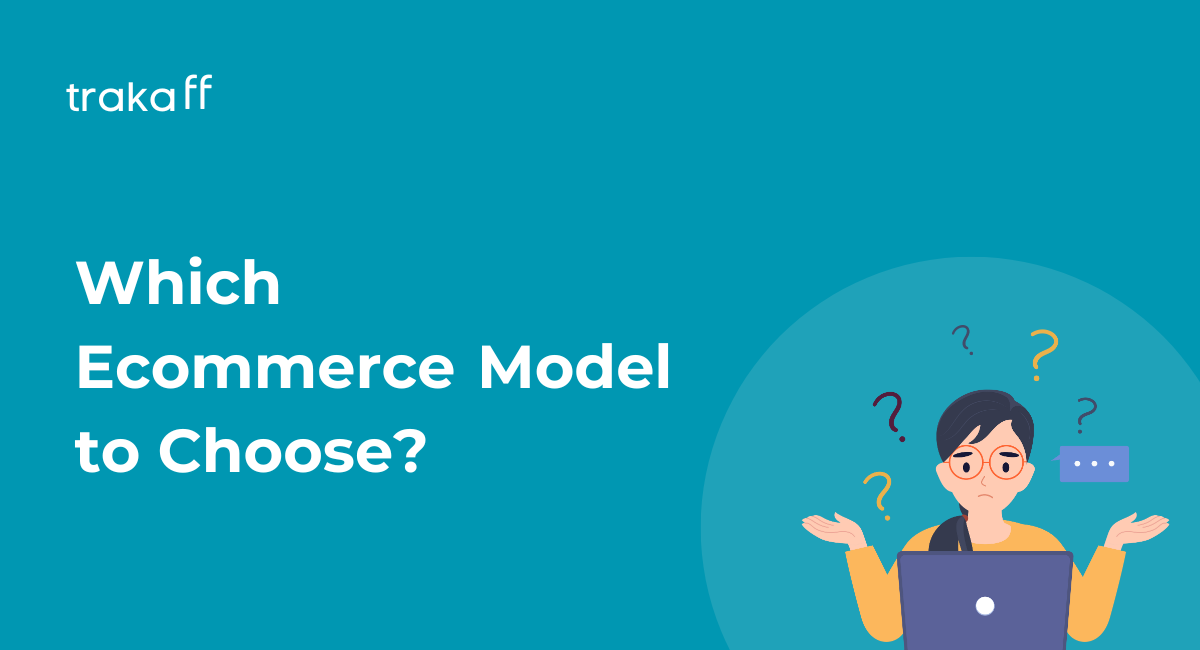Ecommerce revolutionized the purchase process in society and opened a new method of earning for every individual. As you start an ecommerce business, you need to think about one thing first and foremost: which business model are you going to adopt? Whether it is drop shipping or having your inventory, both of these models have their own pros and cons that depend on your budget, goals, and the strategy that you apply. Let’s understand dropshipping and inventory models so that you can choose which one is for you or which of them is better for you.

Understanding Dropshipping and Inventory Models
Dropshipping is a method in which you just sell a product without even seeing it. Simply explaining it, considering you are planning to start a phone cover e-commerce, then you need stock to sell. So without investing in bulking the phone covers, you can directly list them on your e-commerce site and when an individual purchases them. You can signal a third party to send it directly to your customer after packaging it.
Inventory-based e-commerce involves bulk purchasing, storing it, and then packaging it before you ship it to a customer.
Pros and Cons of Dropshipping
Pros
- Low Initial Investment: You can start it with minimum capital because you don’t need to purchase inventory upfront. This makes it an attractive option for new entrepreneurs with a low budget.
- Flexibility: This enables you to offer a wide range of products without worrying about storage facilities. This can help you to analyze which product and market trends are currently working on.
- Reduced Risk: Risk is highly minimized because you won’t have to worry about unsold products and waste of packaging resources.
- Location Independence: Since you don’t need to have a physical storage space, this means that you can start working from anywhere you want.
Cons
- Lower Profit Margins: Dropshipping comes with a huge margin that you need to give to your supplier, which can be compared when buying in bulk.
- Lack of Control: Relying on suppliers for product quality, packaging, and shipping times. Any issues that occur in these processes can affect your brand’s reputation.
- Intense Competition: A low budget means high competition, as this can give rise to many dropshipping businesses that may sell the same product from a supplier; this reduces the chances of the brand standing out.
- Inventory and Stock Issues: You will not be able to know if a supplier runs out of stock and a buyer is waiting to purchase it. This can result in the delay and cancellation of the order, which can harm your brand value.
Pros and Cons of Inventory-Based E-Commerce
Pros
- Higher Profit Margins: Buying stock in bulk reduces the cost per unit, which can lead to a high margin.
- Better Control: You have control over everything, like inventory, packaging, and shipping processes, which allows for better quality and customer experience.
- Brand Building: Owning an inventory provides you with many benefits, and one of them is that you can do custom packaging, which can help you stand out from others.
- Scalability: With the right methodologies, you can easily scale up your business while implementing automated systems to manage large volumes of orders.
Cons
- Higher initial investment: As purchasing stock in bulk is quite high, you also need to invest in storage space and packaging stocks.
- Risk of Unsold Inventory: If your products are not sold unexpectedly, then you might end up with unsold stock, which results in tying up your capital and can lead to your losses.
- Storage and Logistics: Managing your inventory and shipping can be quite hectic because of the many operational processes that occur in packaging and while shipping.
- Demand Forecasting: You need to predict the demand, which is crucial for you to avoid overstocking or stockouts.
Key considerations when choosing between dropshipping and inventory
- Budget: Considering your budget is extremely important because if you don’t have enough budget, then you can choose dropshipping because of its low entry barrier. Inventory-based models can be expensive but can be more profitable quite early than drop shipping.
- Control: You need to decide if you want to control anything in the process of stocking, packaging, and shipping. These processes are quite crucial to establish your brand authority and control your quality. An inventory-based model gives you absolute control over it.
- Product Range: The wide variety of products that you list on your e-commerce website can help you increase the chance of purchase from every visitor. Dropshipping can help you list as many products without investing in storage facilities.
- Scalability: You need to choose which model can help you scale your business, as inventory-based can help you provide the right systems in place. While dropshipping can help you provide flexibility and low-risk expansion.
- Market Competition: You need to observe where you will have competition and how you are going to tackle it. Normally, dropshipping is extremely competitive because of the low entry barrier
While inventory-based models can help you control branding and quality, which establish your authority.

Hybrid Models: The Best of Both Worlds?
Some businesses combine both of these models and evolve them into an extremely profitable and advantageous model. Considering there is an established company,
they have a best-selling product, which they are keeping in bulk to control its packaging and provide better shipping.
When they decide to release a new product,
They can consider opting for a dropshipping model to test if it is profitable for them.
Hybrid Model Pros
- Reduced Risk: You can test new products via dropshipping without investing in storage facilities or bulk purchases.
- Flexibility: You can maintain new products while keeping your popular products always available for your customers.
Hybrid Model Cons
- Complex Operations: As managing both dropshipping and inventory-based models can be quite hectic and require efficient systems to handle fulfilment processes.
- Higher Costs: The hybrid model is beneficial, but it also has high operational costs compared to a single-based model.
Making the Final Decisions
To choose which model is better for you or a hybrid model is preferable, for that you can answer these questions and you will see your results.
- What is your budget for starting and running your e-commerce business?
- How much control do you want over the fulfilment process?
- What are your branding and customer experience goals?
- How do you plan to scale your business?
- What is the level of competition in your niche?
As you answer these questions, you will be able to understand which method is better for you to start your e-commerce venture.
Conclusion
After reading this article, you are able to understand the pros and cons of both dropshipping and inventory-based business models. While dropshipping is good for beginners who want to start with a low amount and flexibility,
Inventory-based is a high-margin business with full control over packaging and shipping to provide a brand business.
I suggest you work hard and be adaptable for you to succeed. Using any of the models doesn’t promise you success without your own hard work.